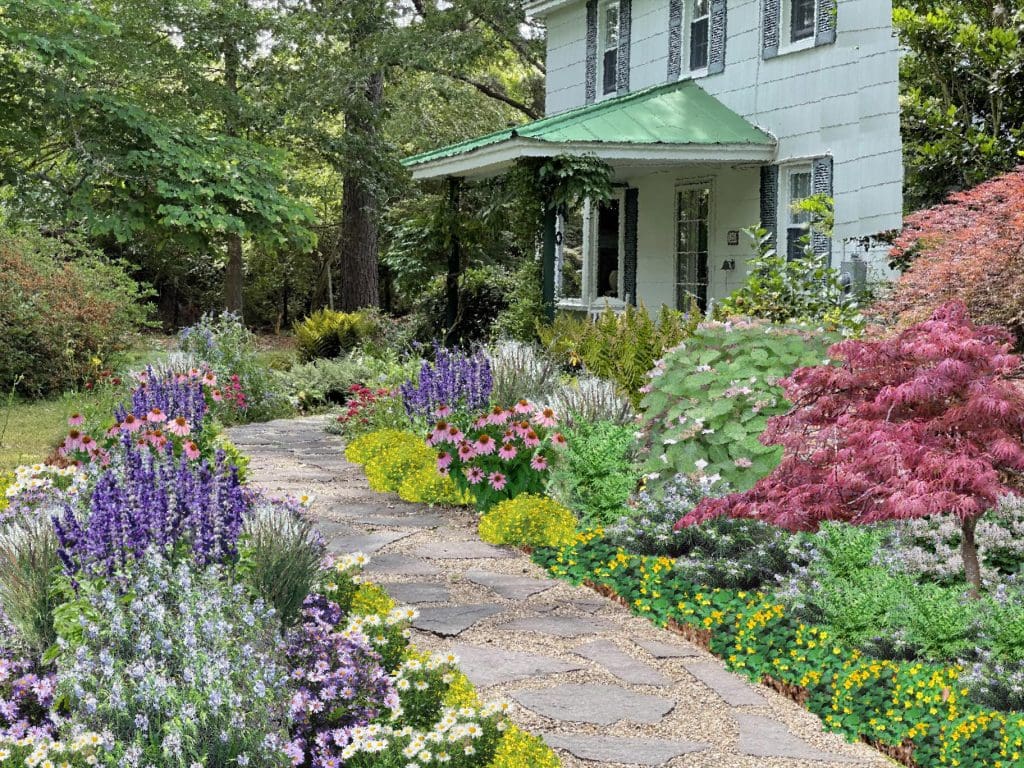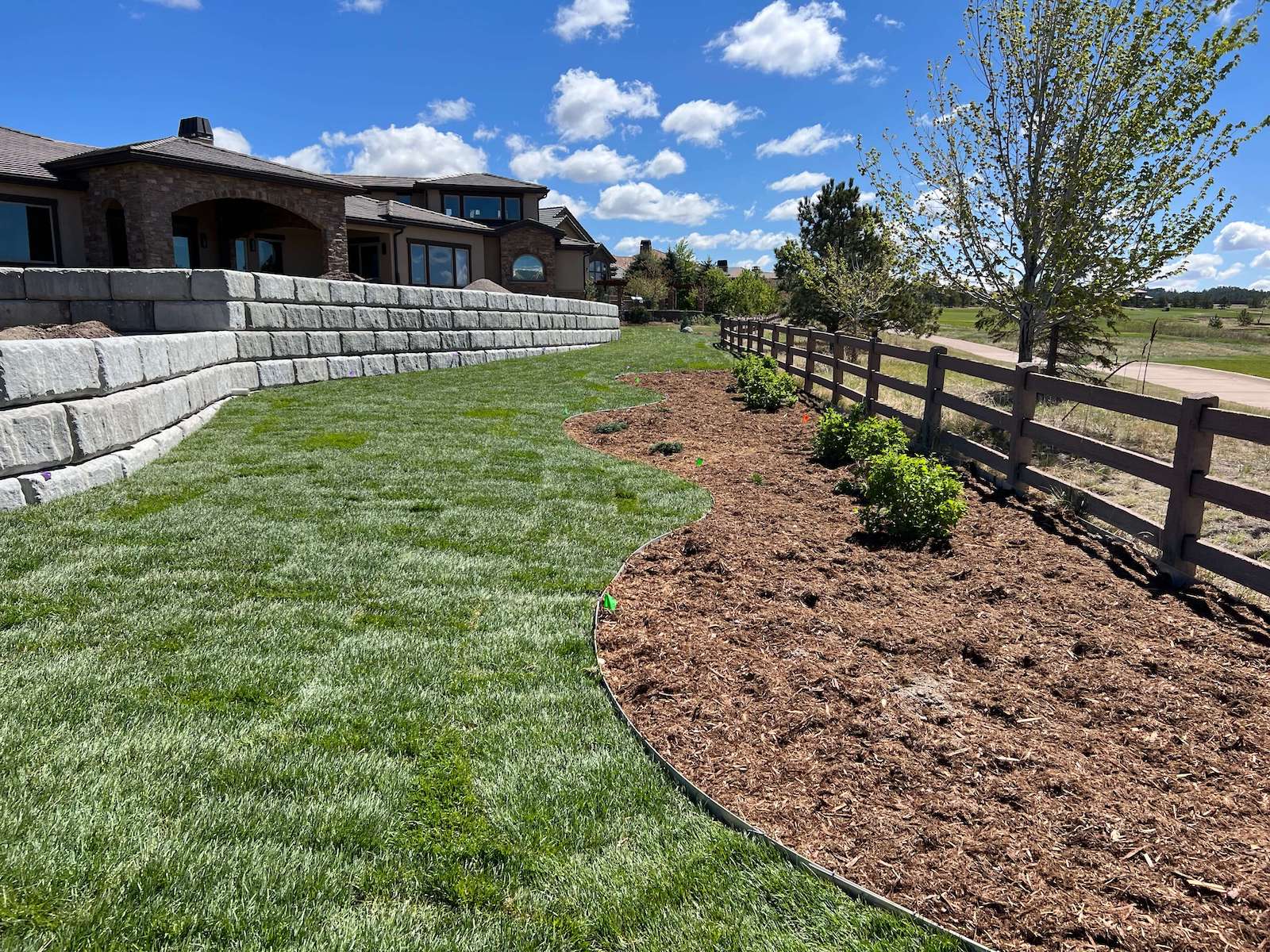The Definitive Guide for Hilton Head Landscapes
The Definitive Guide for Hilton Head Landscapes
Blog Article
Get This Report about Hilton Head Landscapes
Table of ContentsThe Of Hilton Head LandscapesHow Hilton Head Landscapes can Save You Time, Stress, and Money.All about Hilton Head LandscapesExamine This Report about Hilton Head LandscapesFascination About Hilton Head LandscapesThe Single Strategy To Use For Hilton Head LandscapesAll About Hilton Head Landscapes
Line produces all types and patterns and can be used in a selection of ways in the landscape. Line in the landscape is produced by the edge between 2 products, the synopsis or shape of a form, or a long straight feature. Lines are a powerful tool for the developer because they can be used to create a limitless range of shapes and forms, and they control motion of the eye and the body.

Lines can have several qualities, such as those defined below, but they usually offer different functions. Figure 1. Lines in the landscape - landscape design hilton head. The buildings of lines identify just how individuals react to the landscape, both mentally and literally. Straight lines are architectural and forceful; they produce an official personality, are generally related to a balanced style, and lead the eye directly to a focal point.
The smart Trick of Hilton Head Landscapes That Nobody is Talking About
Curved lines develop an informal, natural, unwinded personality that is associated a lot more with nature and asymmetrical balance. Curved lines relocate the eye at a slower speed and add enigma to the room by producing covert sights.
Vertical lines in the landscape consist of tall, narrow plant material, such as trees, or high frameworks, such as an arbor or a bird home on a pole. Straight lines move the eye along the ground airplane and can make a space feel bigger. Low lines are a lot more restrained and produce a sensation of remainder or repose.
Hilton Head Landscapes Can Be Fun For Anyone
Lines are also created by the vertical kinds of constructed functions and plant material. There are three primary line kinds that develop kind in the landscape: bedlines, hardscape lines, and plant lines.
Bedlines attach plant product to the house and hardscape since the eye complies with the line, relocating the stare via the landscape. Hardscape lines are developed by the side of the hardscape, which delineates the developed framework. Line can additionally be developed by lengthy and slim materials, such as a fence or wall surface.
The Definitive Guide for Hilton Head Landscapes
Form is found in both hardscape and plants, and it is usually the leading visual element that spatially arranges the landscape and commonly determines the design of the yard. The form of frameworks, plant beds, and yard accessories likewise identifies the general form motif of the garden. Official, geometric types include circles, squares, and polygons.
Plants develop kind in the yard through their describes or silhouettes, however type can additionally be specified by a gap or adverse area between plants - Landscapers near me (https://www.cheaperseeker.com/u/h1tnhdlndscps). Circles can be cycles, or they can be split into half circles or circle sectors and integrated with lines to create arcs and tangents
Hilton Head Landscapes for Dummies
Circles can additionally be stretched right into ovals and ellipses for more variety and passion. Circles are a solid style type since the eye is always attracted to the center, which can be used to highlight a focal point or link various other kinds. Figure 2. Circular kinds in hardscape and yard panels.
The square type can additionally be segmented and secondhand continuously to create a grid pattern. Unlike circles, squares are stronger on the edges, which can be lined up or overlapped to develop one-of-a-kind patterns and even more intricate forms. Polygons are many-sided kinds with straight sides. Triangles, for instance, are three-sided polygons.
Twisting lines typically resemble the all-natural course of rivers or streams and can be called smooth lines with deeply rounded wavinesses. Twisting lines (Number 3) work well for pathways, plant bedlines, and completely dry stream beds. Meandering lines can include passion and mystery to a garden by leading visitors around edges to find new views and spaces.
The Definitive Guide to Hilton Head Landscapes

Common plant types are well developed and standardized, as type is the most consistent and identifiable characteristic of plants. Kind can also be produced via the massing of plants, where the general mass creates a various form than a private plant.
A very contrasting form must be used with careone or 2 job well as a centerpiece, but as well several wreak havoc. All-natural plant forms, instead of over-trimmed types, must establish the mass of the make-up. The importance of general type is a lot more or much less depending on the checking out perspectivethe type of a tree can show up quite different to a person standing under the cover versus watching the tree from a range in an open area.
The Best Strategy To Use For Hilton Head Landscapes
Plant kinds likewise develop and define deep space or open rooms between the plants, developing either convex or concave forms in the gaps. High-arching tree branches commonly develop a concave open area under the branches, and a round canopy with reduced branches fills up the room to develop a convex form outdoors area under the tree.

Report this page